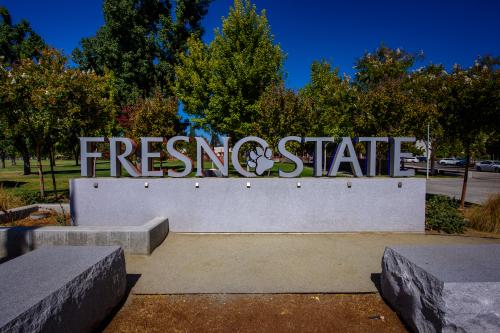When asked how to build a great city, the late Sen. Daniel Patrick Moynihan said, “Create a great university and wait 200 years.” Indeed, America’s network of research universities is one of its greatest sources of talent, entrepreneurship, and research and development—three inputs that in combination can fuel prosperity in the regions that surround those universities.
Yet, while most strong regional economies have a leading research university, the reverse is not always true. That is because the link between university research, commercialization, and broader regional development is neither automatic nor immediate. Some universities are better at engaging with their surrounding industries and communities, and some regions have industries and communities that are more ready to translate the knowledge universities produce into economic development.
The reality is that regional economies are complex, and their outcomes are influenced by countless interactions between markets and institutions—including but not limited to large research universities. Many inputs matter to regional economic development (e.g., business growth, job creation, skilled workers, well-planned built environments), but each is determined by separate regional systems that too often remain unintegrated. In other words, economic development is a “multi-system” process, but regions struggle with effective multi-system governance.
A new wave of federal place-based economic policies led by the Department of Commerce’s Economic Development Administration (EDA) and the National Science Foundation is seeking to change this dynamic through larger-scale, longer-term competitive challenge grants that bring together networks of institutions, including research universities, around a targeted economic opportunity. And in addition to their sizable resources, these challenge grants are designed to catalyze multi-system strategies by requiring a lead regional entity to coordinate organizations across those systems.
While many types of regional institutions could serve this function, research universities are increasingly embracing this role because they understand that regional economic impact requires blending university-based research and talent, industry partnerships, and coordinated governance. Drawing on one of those programs—the EDA’s $1 billion Build Back Better Regional Challenge—this post explores some of the most promising multi-system economic strategies that research universities are leading.
Research universities’ regional economic impact depends on their relevance to surrounding industries and communities
There is a wide body of literature documenting the positive economic impact of research universities. Regions that became home to a land grant university over a century ago have stronger economies today as a result. Increasing state funding to research universities leads to higher levels of local patenting and entrepreneurship. And for each new university patent, researchers estimate 15 additional jobs are created outside the university in the local economy. Indeed, as Daniel P. Gross and Bhaven N. Sampat write, major national research and development efforts (such as those during World War II) tend to shape the geography of American innovation via research universities.
In a nation plagued by regional economic divides, research universities are a uniquely distributed innovation asset. Unlike innovation sector employment, high-growth startups, and venture capital, research universities are spread across the entire nation. Over 200 research universities located in all 50 states expend more than $50 million annually on research and development.
Yet, there are limits to universities’ impact. In a comprehensive review of the literature, economists E. Jason Baron, Shawn Kantor, and Alexander Whalley offer three takeaways: “First, universities’ ability to affect their local economies solely through the supply of college graduates is limited. Second, the main channel by which universities can affect their local economies is through highly localized knowledge spillovers. Third, the literature provides little evidence that establishing a new university in the 21st century is sufficient to revitalize a lagging community and transform its economy. To help revive struggling regions, using existing nearby universities could be a far more cost-effective policy tool.”
In other words, knowledge spillovers to surrounding firms and industries are strongest when university-generated knowledge is highly complementary to industry needs.
Federal place-based industrial policies are linking research universities with local industry clusters and surrounding communities
Against this backdrop, new federal programs are pushing research universities to deploy their talent and knowledge in ways that strengthen the industry clusters that surround them. Finding that knowledge-industry nexus was a central strategic exercise for the 60 finalists in the EDA’s $1 billion Build Back Better Regional Challenge (BBBRC), which asked applicants to craft five-year strategies that invest in advanced industry clusters in ways that benefit historically excluded communities.
Research universities played a fundamental role in the competition.[1] Among the 60 finalist coalitions, research universities served as the quarterback organization in 12, and participated in a supporting role in another 29. Over one-third of the EDA’s investments were awarded to research universities (although many universities are passing those resources on to partners).
How did research universities propose to use that money? In our recent report analyzing the BBBRC, we categorized cluster projects into five categories: talent development; research and commercialization; infrastructure and placemaking; entrepreneurship and capital access; and governance. While research universities are, unsurprisingly, most heavily concentrated in research (41% of overall funding) and talent development (26%), they also proposed a significant number of projects related to tailored infrastructure and innovation facilities, entrepreneurship accelerators and incubators, and regional governance.
The BBBRC exemplifies how research universities can anchor multi-system economic strategies
Catalyzing and growing clusters requires investing in talent, research and development, entrepreneurship, and infrastructure. But regions often struggle to marshal the fiscal, political, and institutional capacity needed to overcome fragmentation in innovation, entrepreneurship, research, workforce, and industry leadership systems and act at a multi-system scale.
Operating at a multi-system scale requires a quarterback organization to coordinate goals, strategies, and investments across those systems. Many types of entities can play this role, but research universities are natural candidates due to their relatively large scale and critical role in fueling innovation ecosystems.
University utilization of BBBRC dollars signifies the potential for research universities to be a fulcrum for multi-system strategies. Indeed, one-third of the research universities in the BBBRC finalist coalitions proposed multi-system strategies, meaning they proposed to lead investments in at least three of the five project categories listed above.
For example, through the New Energy New York (NENY) coalition, Binghamton University is seeking to reorganize the Southern Tier area of upstate New York into a hub for battery manufacturing and energy storage. The university’s multi-system approach will advance the cluster’s talent pool, supply chain, and supportive physical infrastructure. And through the NENY Workforce Development Initiative, the university will partner with other coalition members in higher education to expand existing workforce development programs and develop new training curricula. This partnership will implicate many of the region’s community colleges (including State University of New York [SUNY] Corning and SUNY Broome) and other research universities (including the Rochester Institute of Technology) in reducing the cluster’s barriers to entry and cultivating a diverse pool of well-trained employees to move into its high-wage jobs.
Binghamton University will supplement these workforce development efforts through their NENY Supply Chain Program, where they will partner with the Alliance for Manufacturing and Technology (AMT), NY-BEST, Empire State Development, New York State Energy Research and Development Authority (NYSERDA), and other coalition members and industry partners to expand and improve the cluster’s supply chain. The expansion of this supply chain will enhance the region’s demand for skilled talent in the battery sector and create high-wage jobs for participants in the Workforce Development Initiative. These initiatives will support Battery-NY, the NENY coalition’s hub of infrastructure and industry experts working to advance energy storage technology, support cluster manufacturers, and attract businesses to the region.
Georgia Tech has also proposed operating across multiple systems to bolster advanced manufacturing across the state through the Georgia AI Manufacturing (GA-AIM) coalition. To prepare the state’s future workforce, Georgia Tech will partner with Spelman College and the Technical College System of Georgia on degree and non-degree training options in artificial intelligence. As a complement, the Georgia Tech Enterprise Innovation Institute’s Manufacturing Extension Partnership (GaMEP) will promote the adoption of AI technology among small and medium-sized enterprises in rural communities across the state, creating demand for those newly trained workers. On governance, the Enterprise Innovation Institute’s Connect to Hire program will seek to connect historically excluded communities to these talent development and innovation initiatives. Finally, Georgia Tech is investing in new physical centers to enable commercialization and startup growth.
Further west, the University of Nebraska is a major implementation partner to Invest Nebraska in the Heartland Robotics Cluster’s efforts to accelerate the state’s agricultural technology sector. The Nebraska Manufacturing Extension Partnership (NM-EP) at the University of Nebraska-Lincoln’s Institute of Agriculture and Natural Resources will identify small, medium-sized, and startup manufacturers in rural and urban communities across the state and create a supply chain database connecting them to high-quality suppliers. In addition, the NM-EP will help these manufacturers integrate new robotics technologies into their existing production systems. And as part of the Heartland Robotics Cluster’s commitment to workforce development, the NM-EP’s technology adoption program will provide credentialing and certification to participating manufacturers for cooperative robotic technologies.
In future work, we will profile the implementation of comprehensive university approaches to learn more about how these strategies play out. But these three examples suggest that several elements are necessary to work at a multi-system scale. First, universities must have existing innovation assets that industries value; in each example above, universities are working from existing strengths, not trying to build from scratch. Second, those universities need to have the staff, systems, and staying power to work with other organizations in the region, from government agencies to economic development organizations to community colleges, workforce boards, and community-based organizations. Often, this requires an entrepreneurial leader that can create and sustain strong working and personal relationships with other community leaders. And third, there typically needs to be an external funding source, such as a federal or state program, to rally regional actors around a more ambitious strategy. In this case, the BBBRC provided exactly that type of “jump-ball” funding effect.
While multi-system approaches will not be feasible in every region, the BBBRC illustrates that when the conditions are ripe, universities, industry, and communities can pursue a more systemic approach to regional economic development.
This report was prepared by Brookings Metro using federal funds under award ED22HDQ3070081 from the Economic Development Administration, U.S. Department of Commerce. The statements, findings, conclusions, and recommendations are those of the author(s) and do not necessarily reflect the views of the Economic Development Administration or the U.S. Department of Commerce.
Endnotes
1.“Research universities” include universities that award a minimum of 20 research-based doctoral degrees and spend at least $5 million on research per academic year. Universities are categorized according to the 2021 Carnegie Classifications of Higher Education Institutions based on data collected in the National Science Foundation’s Higher Education Research and Development Survey.









Commentary
How research universities are evolving to strengthen regional economies
Case studies from the Build Back Better Regional Challenge
February 9, 2023